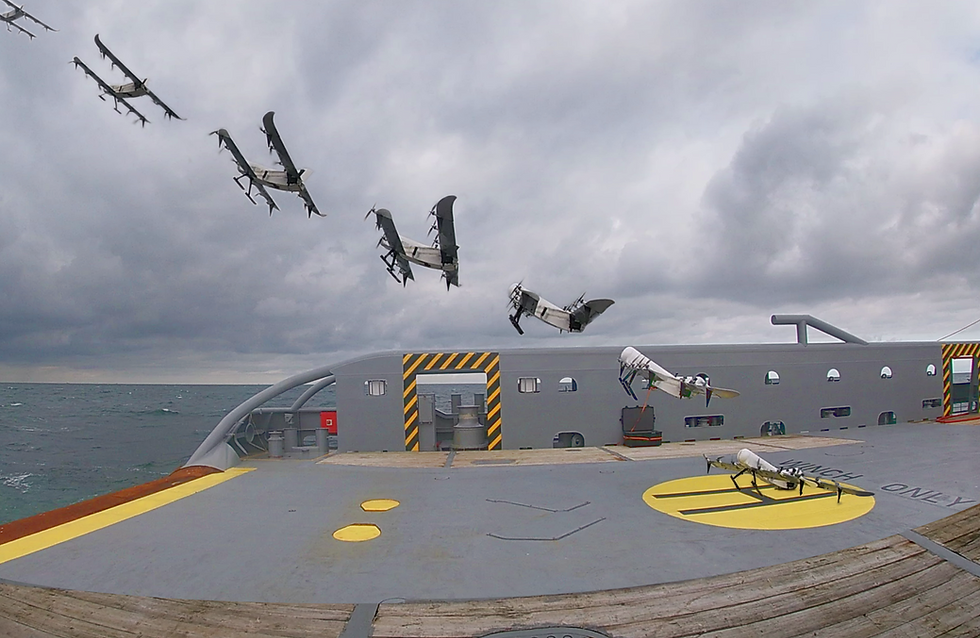Contemporary drone technology has been around for 30 years. If you expand the term of ‘Unmanned Flight Crafts’, humans have developed hot air balloons that are able to make unmanned flights as early as the 18th century.
The idea however was always that being up in the air allows an unparalleled perspective of all things below. To that end, advances in aerodynamics, avionics, and camera equipment successfully realized the idea first in military applications then to commercial and personal usage.
Drone technology is remarkable and it is only beginning. Indeed, manufacturers worldwide continue to incorporate advanced materials, state-of-the-art sensors and high-end cameras into their drones. Additionally, harnessing the power of the Internet, drones are far more connected to the wider world than ever before. With the nascent development of artificial intelligence (AI), there is near limitless potential for innovation.
While this is the vision of the future among adherents, there are some significant challenges to overcome today. This includes patchwork regulations, tech limits, economic viability and others. To anyone in the drone world, newcomers and veterans alike, it is important to understand these challenges so that drones can be safely integrated with the wider airspace.
Limitations of the technology
While the relatively cheap costs of drones and its lightweight airframe is a benefit for most users, there were some compromises made to achieve this. Namely, most commercial drones use lithium polymer batteries, they do not fly as long or as fast when compared to manned aircraft. DJI, the world’s foremost manufacture’s current longest flight time is up to 35 minutes at 68 kph with its Mavic Air 2. Hence, any flight mission requiring longer uses necessitates recharging or the availability of spare batteries.
The smaller airframe compared to say a helicopter also means that drones are more vulnerable to adverse weather conditions. Flying drones in rain or snow can damage electronic components and interfere with communication between the drone and the controller. Although there are many industrial-grade drones, it is up to the operators if they want to take the risk.

Some manufacturers do make gasoline-powered drones. While heavier and sturdier they can stay longer in the air and take minutes to refuel. Of course, they face their own set of problems i.e. higher maintenance and safety requirements with combustible fuel. Researchers are also experimenting with hydrogen as a fuel source and seem to have found success in several instances.
Another way would be to increase the size of the drone. This has already been explored in the military where manned helicopters were converted to be remotely piloted. However, this is not feasible for most commercial applications except for long-range transport. In any case, making small-sized drones fly faster, longer and safer will remain a challenge for the foreseeable future.

Regulations and Managing Traffic
The oil & gas industry is one of the biggest early adopters of drone technology. Their main usage is typically inspection purposes such as for the vast network of pipelines but there are also indoor drones that can operate in tight confined spaces of a ship. Suffice to say, autonomous, beyond visual line of sight (BVLOS) is the next big innovation for drones requiring almost zero direct human input during the flight.
Many drones are already autonomous in most situations and with an onboard AI processor, they can fly without a global positioning system (GPS) in signal impeded environments. This is a key reason why corporations like Amazon and Google are exploring massive drone fleets that will operate in urban environments and replacing many manual tasks.
However, most aviation authorities treat drones like any other aircraft, and rightly so. Adding an unknown quantity to an airspace can be hazardous if not properly managed. The radar signature of a drone is almost the same as a bird. Regulating drone operations is a constant challenge in of itself with many missions manually reviewed before approval. To fully adopt an autonomous fleet will require a paradigm shift in how we treat airspace.
Think of an airport, air traffic controllers (ATC) operate 24/7 to manage the flow of traffic via radar and radio. The job is stressful with the high volume of airplanes even in controlled airspace. With fleets of drones, that is virtually impossible in an urban city. Current drones already have some form of collision-detection systems to prevent accidents but to really move forward, there needs to be development in unmanned traffic management (UTM) infrastructure. Rather than relying on centralization, UTM is dependent on distributed authority whereby multiple low altitude drones can communicate freely with multiple networks rather than speaking to a single entity such as an ATC.
In practice, it will remove human operators from dictating the airspace, instead data is shared between stakeholders to automatically manage the safety and distance between themselves. For example, before a drone pilot launches the drone, his application will be fully automated and approved based on multiple service providers for that airspace in near-real-time. If he violates the conditions set, there’ll also be notifications to the other aircraft, not just the authorities. A fully developed UTM is the key to BVLOS missions and the safe, efficient flying of the airspace.

It is estimated that around half a million commercial drone units are registered in the U.S. with a further 200,000 Federal Aviation Administration (FAA) certified remote pilots. However, drones are still a novelty in many places worldwide. It is hoped that prospects, armed with a thorough understanding will be able to unlock the true value of the technology for the benefit of their respective industries and nations.
If you are thinking about drones and want to know how to start, contact us today.
Drone Academy Asia
admin@droneacademy-asia.com

Comments